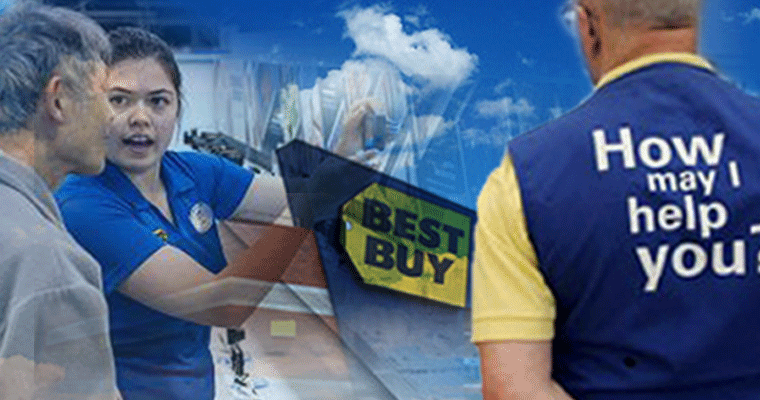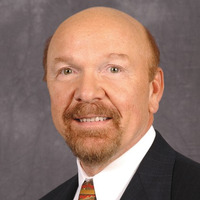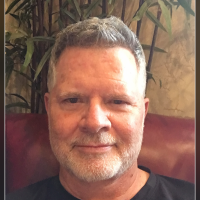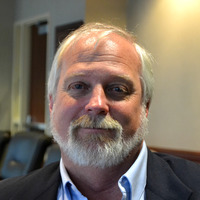How Best Buy Engages Employees in Putting Customers First

Most businesses say that they put the customer first. Yet customers today are more ready than ever to bolt. The changing fortunes of even venerable chains such as Macy's and Sears shows that no business is immune.
Customer retention is at an all-time low, and it appears that many businesses struggle to gain customer loyalty. Customers routinely express dissatisfaction with product performance, complex communication procedures, pushy sales people and uninformed staff. Many complain about poor customer service, automated call centers, products not performing as promised, and a lack of information to guide purchase decisions. Because customers have more choices than ever before, when they are dissatisfied with a business they turn to a competitor and also influence other buyers through social media. However, those businesses that are able to make customers feel like "number one" enjoy loyal repeat customers who boost sales and also help attract new customers through good word of mouth. But with all the responsibilities entrepreneurs need to manage, how can they ensure that they have a customer-centric business?
Best Buy, which generates nearly $40 billion in sales a year and whose stock price has risen dramatically in the past four years, has a strategy for keeping customers coming back: a mission that focuses on the customer experience and emphasizes the importance of the customer in everything the company does, from recruiting to training to employee decision-making.
Rather than having a sales-directed environment that focuses on encouraging customers to spend the most money, Best Buy puts the customer in control. Sales associates are not paid by commission. Rather, their role is to serve as sources of information, so that customers feel confident making buying decisions. This also means that Best Buy needs to keep their finger on the pulse of the customer by anticipating product demand and consistently improving customer service. To do these things, Best Buy has created a system that relies heavily on employee engagement, making every employee responsible for the customer experience. Thus, to be a customer-centric business, Best Buy leverages the power of its employees who are instrumental in identifying customers’ pain points, understanding product features, staying on top of new trends and keeping an eye on the competition.
Below are five key practices Best Buy uses to get employees focused on putting the customer first.
Start By Recruiting The Best
In order to offer the best customer experience, Best Buy looks to hire the best employees. For employees with customer contact, they seek people who can easily connect with others, enjoy being part of a team and want to be engaged. Besides considering their work experience, Best Buy looks for individuals with interesting hobbies and skills, often an indicator of their passion and willingness to learn. These outside interests also help employees connect with customers and can play a role in assigning the employee to the best department. For example, an individual who plays guitar may be well-suited for the home audio department, while an individual who enjoys photography would fit well with the camera department. Because Best Buy emphasizes teamwork, they also make the hiring process inclusive by having job candidates meet staff from their prospective department. Staff are instructed to look for "fit" and to determine if the candidate "knows what she says she knows." This last point is key in putting the customer first, since employees often need to rely on one another to answer customers’ complex questions.
Invest in Employee Training
Hiring the best employees is simply a starting point for Best Buy; they then continuously invest in them so that they are the most knowledgeable staff in the industry. Whenever there are changes in product lines, additions to features or new processes, Best Buy provides training. This helps employees to better understand the many uses for a product and to assist customers in comparing different products. Employees are encouraged to show a personal interest in understanding customers’ needs and then to use their product knowledge to point the customer to the best products that will meet those needs. In this way, Best Buy views their employees as a resource to customers who give them the necessary support and knowledge so that they can ultimately make a purchase decision. Further, in viewing their employees as a resource to customers, Best Buy welcomes customers to come to their stores to get product advice and usage tips from employees, not just to buy products. This allows Best Buy to be more than just a store to customers, but also an experience.
Offer More Services
Best Buy realizes that customers comparison shop, which means that they must have competitive prices to get the customers in the door. However, they also realize that the "tie breaker" between them and the competition is service; Best Buy offers customers more services than the competition. In addition to continuously training staff, Best Buy has Geek Squad, which offers 24-hour support for a host of products like appliances, computers, cell phones and video games. While competitors tend to focus on selling products, Best Buy not only sells those products but can also help the customer with installation, technical support and repairs. Additionally, because customers who originally did not buy from Best Buy frequently turn to Geek Squad for help, those customers are often converted to new Best Buy customers because of the lack of service from competitors. By assisting anyone with their technical needs, Best Buy is able to demonstrate their care for the customer and sway customers from shopping at their competitors.
Solicit Help From Employees
To understand the customer and anticipate their evolving needs, Best Buy gets creative in soliciting help from employees. They realize that their sales associates are the ones with direct contact with customers and therefore, are the ones who hear what customers are looking for as well as their complaints. To ensure that employees share this valuable information, Best Buy offers multiple rewards that recognize exceptional customer service and ideas that make an impact. While Best Buy has traditional awards like Employee of the Month, they also have more frequent and spontaneous awards that celebrate employee contributions. For example, each Saturday store managers pass out gift cards to show their appreciation to employees who went above and beyond in some way. Best Buy also fosters employee participation and inclusiveness by getting them involved in selecting products, choosing services to offer and setting prices.
In an effort to encourage employees to think like customers and stay ahead of the competition, Best Buy pays employees to routinely shop at competitors’ stores. For two hours per week, employees take turns investigating the products competitors are offering and their price points. Employees then report back to their store and share the information with the team. Store managers at Best Buy are given the autonomy to act on this information to ensure that their store is offering the best products at the best prices. Managers also routinely take cashiers out for breakfast to talk about the customer experience. Additionally, each Saturday morning store managers lead a team meeting with all employees to report on the store’s sales and financial ratios and to ask for ideas for the next week. These meetings are important in building trust among employees and demonstrating to employees their significance to Best Buy’s success. They are also instrumental in creating a culture where employee input is valued and employees feel empowered.
Encourage Innovation
To consistently be able to anticipate and respond to customers’ evolving needs requires a willingness to innovate and experiment. Those businesses that do not embrace change will be left behind by their more innovative competitors. Recognizing the importance of innovation, Best Buy hires and promotes managers who are receptive to new ideas. District managers are instructed to evaluate stores partly based on what is new and how each store is working to improve the customer experience. When they see lots of testing and experimenting going on, then they know that the store is implementing employee suggestions and that managers are soliciting employees’ input.
However, with greater innovation comes the risk of greater mistakes. Realizing this connection, Best Buy does not punish failures from innovation, but instead, looks to see what they can learn from them. District managers then share this information among store managers and the corporate office so that the entire company can avoid repeating innovative experiments that fell short. Because of their open communication and engaged employees, it is not uncommon for employees from another store to identify how the failed experiment could be tweaked to work in the future.
Additionally, Best Buy realizes that not all ideas can be implemented. The timing may be wrong, the idea could have been tried in the past and failed, or it may not be feasible. But, it is important that employees do not get discouraged and continue to share their ideas. Employees need to feel appreciated for sharing their ideas and kept informed of their viability. The worst thing an organization can do is ignore an employees’ suggestion and not follow up. By keeping employees engaged and continuously seeking feedback, employees can be made part of the idea generation process and also help implement innovations. This helps to keep those whose ideas were not implemented involved and spreads the "ownership" of any idea among employees.
Conclusion
Entrepreneurs must manage a bewildering number of factors as they build a business. But as Best Buy's experience shows, being customer-centric at the earliest stages and involving employees at every level can generate tremendous benefits. It makes both the customers and the employees feel valued -- and in the process, creates loyalty that is increasingly hard to find in a world with many options and few guarantees.
References
Kumar, V., Dalla Pozza, I., & Ganesh, J. (2013). Revisiting the satisfaction–loyalty relationship: empirical generalizations and directions for future research. Journal of Retailing, 89(3), 246-262.




